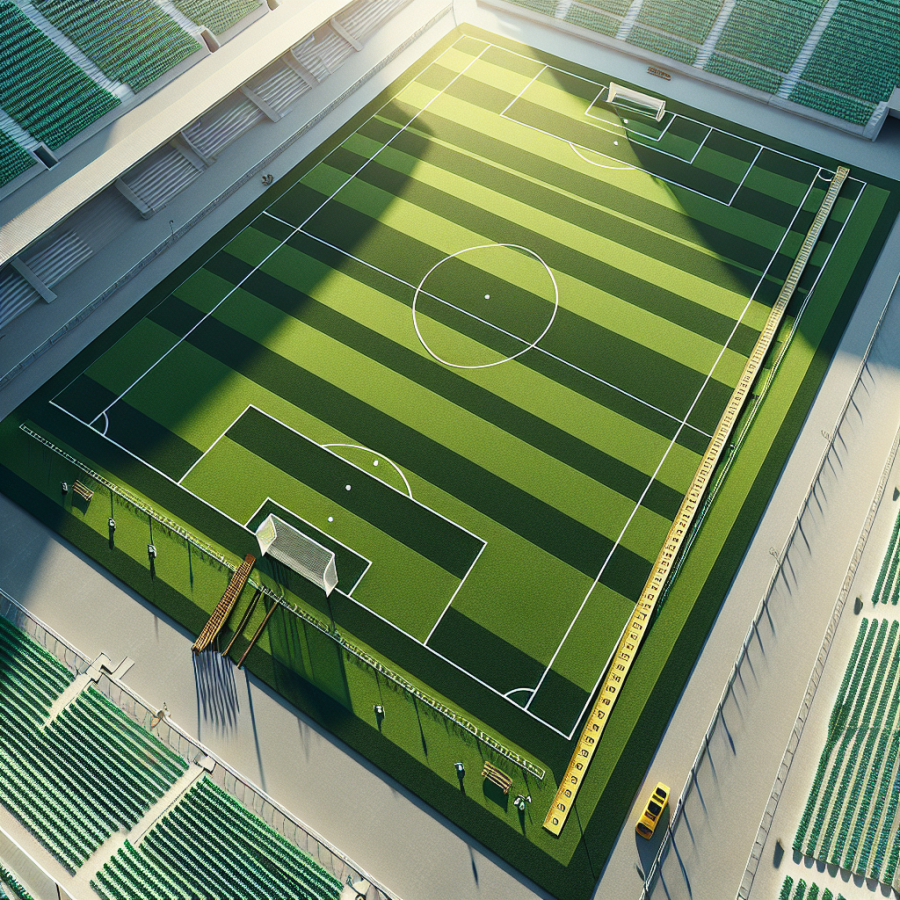Unveiling the Official Soccer Field Measurements in Feet
Soccer, known as football outside of North America, is a sport governed by international standards when it comes to field dimensions. These standardized measurements ensure uniformity of play across the globe. According to the International Football Association Board (IFAB), which is responsible for the Laws of the Game, there are specific rules regarding the size of a soccer field, also known as a pitch.
When talking about the official soccer field measurements in feet, the field length (touchline) must be a minimum of 100 yards (300 feet) and a maximum of 130 yards (390 feet). The width (goal line) should not be less than 50 yards (150 feet) and not more than 100 yards (300 feet). Notably, for international matches, the field dimension requirements are a bit more stringent—the length must be between 110 yards (330 feet) and 120 yards (360 feet) and the width must be between 70 yards (210 feet) and 80 yards (240 feet).
The field is divided into two halves, with a halfway line marking the separation. Centered on this line is the center circle, which has a radius of 10 yards (30 feet), thus creating a diameter of 20 yards (60 feet) for the circle itself.
Each half of the field has a penalty area and a goal area. The penalty area, a crucial zone for determining fouls that may lead to penalty kicks, measures 18 yards (54 feet) from the inside of each goalpost and extends 18 yards (54 feet) into the field. This creates a total area 44 yards (132 feet) wide and 18 yards (54 feet) deep. Within the penalty area is the smaller goal area, which extends 6 yards (18 feet) from the inside of each goalpost and 6 yards (18 feet) onto the field, totalling 20 yards (60 feet) in width and 6 yards (18 feet) in depth.
The goalposts are placed at the center of each goal line. A standard soccer goal measures 8 yards (24 feet) wide between the inside edges of the two posts, and the lower edge of the crossbar should be 8 feet (2.44 meters) above the ground.
Corner areas are marked within a one-yard (three-foot) radius from each corner, denoting where corner kicks are taken.
Read also:
Unlocking the Secrets of Top Athletes: An In-Depth Analysis of Sports Performance
Breaking Down the Distinct Sizes of Soccer Fields in Feet
Soccer fields, or as they are known globally, football pitches, come in a variety of sizes. Though there is a range of acceptable dimensions, certain standards are commonly adhered to for professional play. The distinct sizes of these fields in feet can affect the style of play and the dynamics of the game, making the understanding of these variations crucial for both players and enthusiasts.
The International Football Association Board (IFAB), which determines the laws of the game, stipulates that the length of a soccer field for international matches should be between 110 and 120 yards (330 feet to 360 feet), while the width should range from 70 to 80 yards (210 feet to 240 feet). Therefore, the smallest a professional soccer field can be, according to international standards, is 23,100 square feet (70 yards width by 110 yards length). This space can extend up to a maximum of 28,800 square feet if the maximum dimensions of 120 yards length by 80 yards width are utilized.
For non-international matches, the flexibility in dimensions increases slightly. Fields can be measuring from 100 to 130 yards (300 feet to 390 feet) in length and 50 to 100 yards (150 feet to 300 feet) in width. This allows for a smaller field of 15,000 square feet at the minimum size, scaling up to as large as 39,000 square feet for the maximum allowable dimensions.
When examining professional leagues and competitions such as the Premier League, La Liga, or the FIFA World Cup, one will notice that the dimensions tend to be closer to the larger end of the spectrum. For example, the famed Camp Nou in Barcelona, Spain, measures at 374 by 229 feet, translating to a playing area of approximately 85,726 square feet. Alternatively, the Santiago Bernabéu Stadium in Madrid spans an area of 355 by 225 feet, totaling around 79,875 square feet.
It is interesting to note that the size of a soccer field can have a profound impact on how a game is played. Larger pitches benefit teams that thrive on a wide-open style, utilizing the flanks and capitalizing on the physical fitness and speed of players. Smaller fields, on the other hand, can benefit teams that play a tight, technical game, focusing on short passes and close control.




